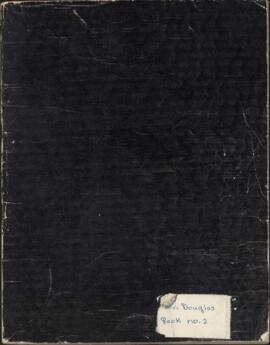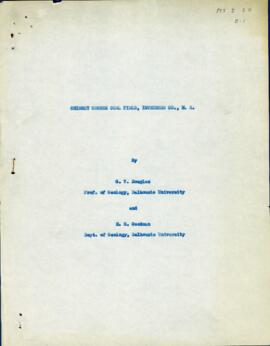Title and statement of responsibility area
Title proper
General material designation
- Textual record
Parallel title
Other title information
Title statements of responsibility
Title notes
Level of description
Repository
Reference code
Edition area
Edition statement
Edition statement of responsibility
Class of material specific details area
Statement of scale (cartographic)
Statement of projection (cartographic)
Statement of coordinates (cartographic)
Statement of scale (architectural)
Issuing jurisdiction and denomination (philatelic)
Dates of creation area
Date(s)
-
1929-1956 (Creation)
Physical description area
Physical description
Publisher's series area
Title proper of publisher's series
Parallel titles of publisher's series
Other title information of publisher's series
Statement of responsibility relating to publisher's series
Numbering within publisher's series
Note on publisher's series
Archival description area
Name of creator
Biographical history
George Vibert Douglas was a Canadian geologist and educator. Born in Montreal on July 2, 1892, he was educated in British private schools, graduated from McGill with a BSc (1920) and MSc (1921) and pursued doctoral studies at Harvard University. He was married to Olga Margaret Chrichton, with whom he had four children.
Douglas was a captain with the British Army in World War One, serving with the 17th Northumberland Fusiliers from 1915-1919 in Flanders and France. He received the Military Cross for his efforts. From 192-1922 he worked as a geologist on a Shackleton-Rowett Antarctic expedition and subsequently spent a year at Cambridge. In 1923 he began a PhD at Harvard, where he also lectured in geology. He ended his studies prematurely in 1926 to become chief geologist at the Spanish company Rio Tinto. From 1930-1931 he was a member of the exploration of the Rhodesia-Congo Border Concession.
Douglas came to Dalhousie in the early 1930s and was appointed the first Carnegie Professor of Geology, also serving as Head of Geology from 1932-1957. He was an active member of the university community, helping to establish both the Dalhousie Art Gallery and a student employment centre to assist students seeking work in mining and related fields. He led Dalhousie expeditions to Labrador in 1946 and 1947 and served as Nova Scotia's Provincial Geologist. Douglas retired from Dalhousie in 1957 and died October 8, 1958. The Douglas Prize in Geology was established in his honour.
Custodial history
Scope and content
Notes area
Physical condition
Immediate source of acquisition
Arrangement
Language of material
- English




